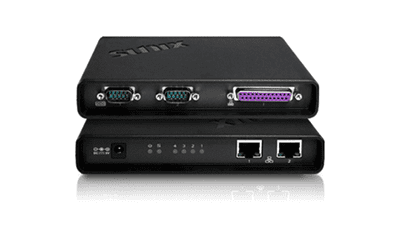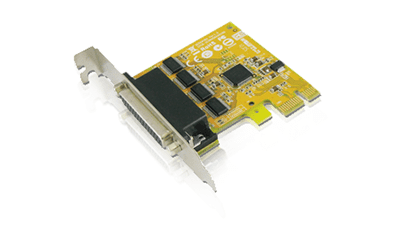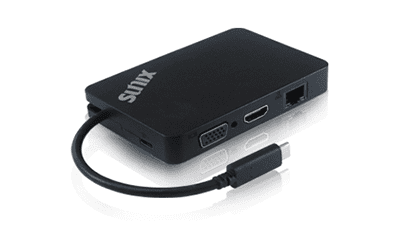SUNIX CAN FD Communication Card in MRI Applications
1. Background and Challenges
With the advancement of smart healthcare, MRI systems have evolved beyond standalone imaging equipment to become integrated platforms combining AI inference, remote diagnostics, cloud storage, and automated control. Such architecture demands higher levels of real-time data transmission, stability, and security.
Traditional communication interfaces such as USB or Ethernet, though high-speed, still face limitations in module synchronization, electromagnetic interference resistance, and industrial-grade reliability.
2. Features of SUNIX CAN-E2102SI Communication Card
The SUNIX CAN-E2102SI PCIe expansion card, designed by SUNIX Technology for industrial and medical applications, provides the following advantages:
- Dual-channel CAN FD support: connects MRI control modules
- PCIe Gen2 x1 interface: compatible with mainstream edge computers and medical workstations
- Supports Windows / Linux SocketCAN drivers for seamless integration
- Certified with CE / FCC / VCCI / BSMI standards, ensuring device safety compliance
3. Advantages of CAN FD
| Feature | Description |
|---|---|
| Data Rate | Up to 8 Mbps, significantly higher than traditional CAN (1 Mbps) |
| Frame Size | Expanded to 64 Bytes, supporting large imaging tags and control messages |
| Electrical Isolation | Provides 2.5KV isolation protection suitable for medical environments |
| Surge Protection | 2KV surge protection enhances system stability |
| Multi-Channel Support | Handles multiple module communications, ideal for modular MRI systems |
4. CAN FD in Smart Medical MRI Architecture
This architecture enables:
- Real-time transmission of imaging markers to AI modules after MRI scanning
- CAN FD integration for communication among all MRI modules (patient positioning, image scanning, monitoring)
- All inter-module communications feature high stability and electrical isolation
5. Smart Medical MRI Application Scenarios
Cardiovascular System: Cardiac MRI uses CAN FD to manage communication across all MRI modules, enabling synchronized imaging and scanning actions for patients.
Other Common MRI Applications: Trunk and abdominal organs, musculoskeletal systems, pediatric and fetal imaging, intraoperative and interventional imaging.
6. Technical Advantages and Benefits
| Indicator | CAN | CAN FD (SUNIX) | Practical Benefits |
|---|---|---|---|
| Data Transmission Efficiency | Low | High (64 bytes/frame) | Reduces communication latency and improves task responsiveness |
| System Scalability | Limited | High | Supports multi-module concurrent operation |
| Fault Tolerance & Stability | Average | Excellent | Reduces communication error rate and enhances system reliability |
| Integration Cost | High | Moderate | Coexists with existing CAN devices, lowering upgrade costs |
| Development Support | Weak | Comprehensive (SDK/API) | Accelerates system integration and deployment |
7. Conclusion
MRI systems are evolving toward intelligent and modular architectures. The adoption of CAN FD not only improves communication efficiency but also enhances system safety and stability. SUNIX Technology’s CAN-E2102SI expansion card provides a medical-grade communication solution that is ideal for future smart healthcare applications such as surgical robots, remote diagnostics, and intelligent ward control systems.
Articles
Use Cases
-
Hailo8 Application – Face Recognition
-
Hailo8 Application – ReID
-
Applications of SUNIX CAN FD Communication Card in Smart Manufacturing
-
SUNIX CAN FD Communication Card in Railway Transportation Applications
-
SUNIX CAN FD Communication Card in MRI Applications
-
External Storage System Application High-Performance Architecture Based on SUNIX OCuLink Expansion Card
-
UPB2430 USB4 Daisy Chain Application: Unlocking a High-Performance Chaining Experience
-
Application of SUNIX CAN FD Communication Card in Smart Mobile Robots (AGV/AMR)
-
Application of SUNIX CAN FD Card in Automotive Repair Station Diagnostic Systems
-
SUNIX CAN FD Card in Modular Energy Storage Systems
-
Applications and Benefits of CAN FD in Automotive Service Station Diagnostic Systems
-
Application of CAN FD in Electric Vehicle Battery Management Systems
-
CANbus Will Play Critical Role in Electric and Autonomous Vehicles by OEM OFF-HIGHWAY
SUNIX CAN FD Communication Card in MRI Applications
1. Background and Challenges
With the advancement of smart healthcare, MRI systems have evolved beyond standalone imaging equipment to become integrated platforms combining AI inference, remote diagnostics, cloud storage, and automated control. Such architecture demands higher levels of real-time data transmission, stability, and security.
Traditional communication interfaces such as USB or Ethernet, though high-speed, still face limitations in module synchronization, electromagnetic interference resistance, and industrial-grade reliability.
2. Features of SUNIX CAN-E2102SI Communication Card
The SUNIX CAN-E2102SI PCIe expansion card, designed by SUNIX Technology for industrial and medical applications, provides the following advantages:
- Dual-channel CAN FD support: connects MRI control modules
- PCIe Gen2 x1 interface: compatible with mainstream edge computers and medical workstations
- Supports Windows / Linux SocketCAN drivers for seamless integration
- Certified with CE / FCC / VCCI / BSMI standards, ensuring device safety compliance
3. Advantages of CAN FD
| Feature | Description |
|---|---|
| Data Rate | Up to 8 Mbps, significantly higher than traditional CAN (1 Mbps) |
| Frame Size | Expanded to 64 Bytes, supporting large imaging tags and control messages |
| Electrical Isolation | Provides 2.5KV isolation protection suitable for medical environments |
| Surge Protection | 2KV surge protection enhances system stability |
| Multi-Channel Support | Handles multiple module communications, ideal for modular MRI systems |
4. CAN FD in Smart Medical MRI Architecture
This architecture enables:
- Real-time transmission of imaging markers to AI modules after MRI scanning
- CAN FD integration for communication among all MRI modules (patient positioning, image scanning, monitoring)
- All inter-module communications feature high stability and electrical isolation
5. Smart Medical MRI Application Scenarios
Cardiovascular System: Cardiac MRI uses CAN FD to manage communication across all MRI modules, enabling synchronized imaging and scanning actions for patients.
Other Common MRI Applications: Trunk and abdominal organs, musculoskeletal systems, pediatric and fetal imaging, intraoperative and interventional imaging.
6. Technical Advantages and Benefits
| Indicator | CAN | CAN FD (SUNIX) | Practical Benefits |
|---|---|---|---|
| Data Transmission Efficiency | Low | High (64 bytes/frame) | Reduces communication latency and improves task responsiveness |
| System Scalability | Limited | High | Supports multi-module concurrent operation |
| Fault Tolerance & Stability | Average | Excellent | Reduces communication error rate and enhances system reliability |
| Integration Cost | High | Moderate | Coexists with existing CAN devices, lowering upgrade costs |
| Development Support | Weak | Comprehensive (SDK/API) | Accelerates system integration and deployment |
7. Conclusion
MRI systems are evolving toward intelligent and modular architectures. The adoption of CAN FD not only improves communication efficiency but also enhances system safety and stability. SUNIX Technology’s CAN-E2102SI expansion card provides a medical-grade communication solution that is ideal for future smart healthcare applications such as surgical robots, remote diagnostics, and intelligent ward control systems.
Articles
Use Cases
-
Hailo8 Application – Face Recognition
-
Hailo8 Application – ReID
-
Applications of SUNIX CAN FD Communication Card in Smart Manufacturing
-
SUNIX CAN FD Communication Card in Railway Transportation Applications
-
SUNIX CAN FD Communication Card in MRI Applications
-
External Storage System Application High-Performance Architecture Based on SUNIX OCuLink Expansion Card
-
UPB2430 USB4 Daisy Chain Application: Unlocking a High-Performance Chaining Experience
-
Application of SUNIX CAN FD Communication Card in Smart Mobile Robots (AGV/AMR)
-
Application of SUNIX CAN FD Card in Automotive Repair Station Diagnostic Systems
-
SUNIX CAN FD Card in Modular Energy Storage Systems
-
Applications and Benefits of CAN FD in Automotive Service Station Diagnostic Systems
-
Application of CAN FD in Electric Vehicle Battery Management Systems
-
CANbus Will Play Critical Role in Electric and Autonomous Vehicles by OEM OFF-HIGHWAY
SUNIX CAN FD Communication Card in MRI Applications
1. Background and Challenges
With the advancement of smart healthcare, MRI systems have evolved beyond standalone imaging equipment to become integrated platforms combining AI inference, remote diagnostics, cloud storage, and automated control. Such architecture demands higher levels of real-time data transmission, stability, and security.
Traditional communication interfaces such as USB or Ethernet, though high-speed, still face limitations in module synchronization, electromagnetic interference resistance, and industrial-grade reliability.
2. Features of SUNIX CAN-E2102SI Communication Card
The SUNIX CAN-E2102SI PCIe expansion card, designed by SUNIX Technology for industrial and medical applications, provides the following advantages:
- Dual-channel CAN FD support: connects MRI control modules
- PCIe Gen2 x1 interface: compatible with mainstream edge computers and medical workstations
- Supports Windows / Linux SocketCAN drivers for seamless integration
- Certified with CE / FCC / VCCI / BSMI standards, ensuring device safety compliance
3. Advantages of CAN FD
| Feature | Description |
|---|---|
| Data Rate | Up to 8 Mbps, significantly higher than traditional CAN (1 Mbps) |
| Frame Size | Expanded to 64 Bytes, supporting large imaging tags and control messages |
| Electrical Isolation | Provides 2.5KV isolation protection suitable for medical environments |
| Surge Protection | 2KV surge protection enhances system stability |
| Multi-Channel Support | Handles multiple module communications, ideal for modular MRI systems |
4. CAN FD in Smart Medical MRI Architecture
This architecture enables:
- Real-time transmission of imaging markers to AI modules after MRI scanning
- CAN FD integration for communication among all MRI modules (patient positioning, image scanning, monitoring)
- All inter-module communications feature high stability and electrical isolation
5. Smart Medical MRI Application Scenarios
Cardiovascular System: Cardiac MRI uses CAN FD to manage communication across all MRI modules, enabling synchronized imaging and scanning actions for patients.
Other Common MRI Applications: Trunk and abdominal organs, musculoskeletal systems, pediatric and fetal imaging, intraoperative and interventional imaging.
6. Technical Advantages and Benefits
| Indicator | CAN | CAN FD (SUNIX) | Practical Benefits |
|---|---|---|---|
| Data Transmission Efficiency | Low | High (64 bytes/frame) | Reduces communication latency and improves task responsiveness |
| System Scalability | Limited | High | Supports multi-module concurrent operation |
| Fault Tolerance & Stability | Average | Excellent | Reduces communication error rate and enhances system reliability |
| Integration Cost | High | Moderate | Coexists with existing CAN devices, lowering upgrade costs |
| Development Support | Weak | Comprehensive (SDK/API) | Accelerates system integration and deployment |
7. Conclusion
MRI systems are evolving toward intelligent and modular architectures. The adoption of CAN FD not only improves communication efficiency but also enhances system safety and stability. SUNIX Technology’s CAN-E2102SI expansion card provides a medical-grade communication solution that is ideal for future smart healthcare applications such as surgical robots, remote diagnostics, and intelligent ward control systems.
Articles
Use Cases
-
Hailo8 Application – Face Recognition
-
Hailo8 Application – ReID
-
Applications of SUNIX CAN FD Communication Card in Smart Manufacturing
-
SUNIX CAN FD Communication Card in Railway Transportation Applications
-
SUNIX CAN FD Communication Card in MRI Applications
-
External Storage System Application High-Performance Architecture Based on SUNIX OCuLink Expansion Card
-
UPB2430 USB4 Daisy Chain Application: Unlocking a High-Performance Chaining Experience
-
Application of SUNIX CAN FD Communication Card in Smart Mobile Robots (AGV/AMR)
-
Application of SUNIX CAN FD Card in Automotive Repair Station Diagnostic Systems
-
SUNIX CAN FD Card in Modular Energy Storage Systems
-
Applications and Benefits of CAN FD in Automotive Service Station Diagnostic Systems
-
Application of CAN FD in Electric Vehicle Battery Management Systems
-
CANbus Will Play Critical Role in Electric and Autonomous Vehicles by OEM OFF-HIGHWAY
SUNIX CAN FD Communication Card in MRI Applications
1. Background and Challenges
With the advancement of smart healthcare, MRI systems have evolved beyond standalone imaging equipment to become integrated platforms combining AI inference, remote diagnostics, cloud storage, and automated control. Such architecture demands higher levels of real-time data transmission, stability, and security.
Traditional communication interfaces such as USB or Ethernet, though high-speed, still face limitations in module synchronization, electromagnetic interference resistance, and industrial-grade reliability.
2. Features of SUNIX CAN-E2102SI Communication Card
The SUNIX CAN-E2102SI PCIe expansion card, designed by SUNIX Technology for industrial and medical applications, provides the following advantages:
- Dual-channel CAN FD support: connects MRI control modules
- PCIe Gen2 x1 interface: compatible with mainstream edge computers and medical workstations
- Supports Windows / Linux SocketCAN drivers for seamless integration
- Certified with CE / FCC / VCCI / BSMI standards, ensuring device safety compliance
3. Advantages of CAN FD
| Feature | Description |
|---|---|
| Data Rate | Up to 8 Mbps, significantly higher than traditional CAN (1 Mbps) |
| Frame Size | Expanded to 64 Bytes, supporting large imaging tags and control messages |
| Electrical Isolation | Provides 2.5KV isolation protection suitable for medical environments |
| Surge Protection | 2KV surge protection enhances system stability |
| Multi-Channel Support | Handles multiple module communications, ideal for modular MRI systems |
4. CAN FD in Smart Medical MRI Architecture
This architecture enables:
- Real-time transmission of imaging markers to AI modules after MRI scanning
- CAN FD integration for communication among all MRI modules (patient positioning, image scanning, monitoring)
- All inter-module communications feature high stability and electrical isolation
5. Smart Medical MRI Application Scenarios
Cardiovascular System: Cardiac MRI uses CAN FD to manage communication across all MRI modules, enabling synchronized imaging and scanning actions for patients.
Other Common MRI Applications: Trunk and abdominal organs, musculoskeletal systems, pediatric and fetal imaging, intraoperative and interventional imaging.
6. Technical Advantages and Benefits
| Indicator | CAN | CAN FD (SUNIX) | Practical Benefits |
|---|---|---|---|
| Data Transmission Efficiency | Low | High (64 bytes/frame) | Reduces communication latency and improves task responsiveness |
| System Scalability | Limited | High | Supports multi-module concurrent operation |
| Fault Tolerance & Stability | Average | Excellent | Reduces communication error rate and enhances system reliability |
| Integration Cost | High | Moderate | Coexists with existing CAN devices, lowering upgrade costs |
| Development Support | Weak | Comprehensive (SDK/API) | Accelerates system integration and deployment |
7. Conclusion
MRI systems are evolving toward intelligent and modular architectures. The adoption of CAN FD not only improves communication efficiency but also enhances system safety and stability. SUNIX Technology’s CAN-E2102SI expansion card provides a medical-grade communication solution that is ideal for future smart healthcare applications such as surgical robots, remote diagnostics, and intelligent ward control systems.
Articles
Use Cases
-
Hailo8 Application – Face Recognition
-
Hailo8 Application – ReID
-
Applications of SUNIX CAN FD Communication Card in Smart Manufacturing
-
SUNIX CAN FD Communication Card in Railway Transportation Applications
-
SUNIX CAN FD Communication Card in MRI Applications
-
External Storage System Application High-Performance Architecture Based on SUNIX OCuLink Expansion Card
-
UPB2430 USB4 Daisy Chain Application: Unlocking a High-Performance Chaining Experience
-
Application of SUNIX CAN FD Communication Card in Smart Mobile Robots (AGV/AMR)
-
Application of SUNIX CAN FD Card in Automotive Repair Station Diagnostic Systems
-
SUNIX CAN FD Card in Modular Energy Storage Systems
-
Applications and Benefits of CAN FD in Automotive Service Station Diagnostic Systems
-
Application of CAN FD in Electric Vehicle Battery Management Systems
-
CANbus Will Play Critical Role in Electric and Autonomous Vehicles by OEM OFF-HIGHWAY









